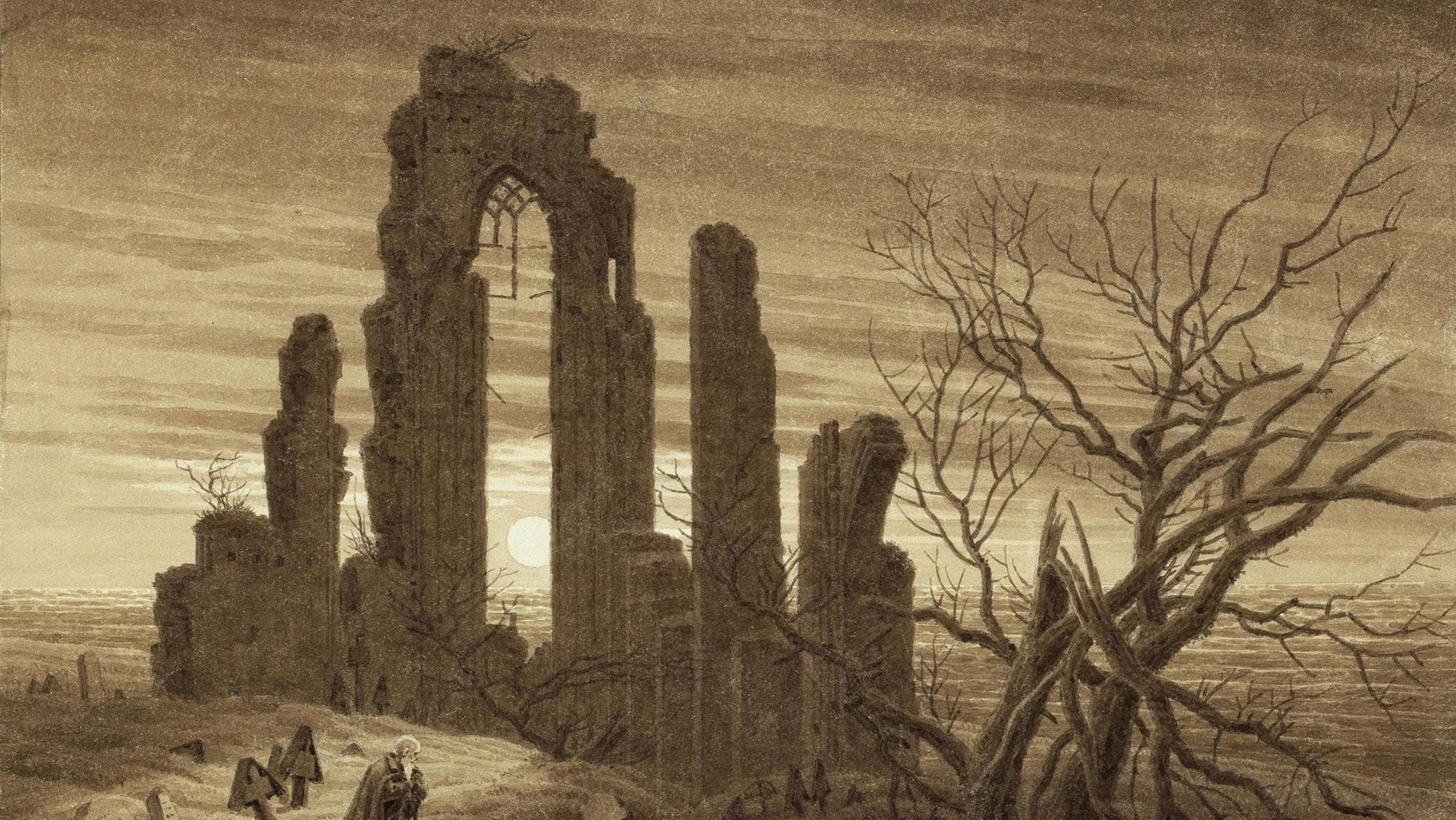The spirit of Romance it blows again over Europe. The new one says Robinson. Because it will mean something if the dedicated exhibition 250 years since the birth of Caspar David Friedrichpainter of women and men lost in endless spaces, sold to Berlin. He Met will answer in 2025, a new york. But, in the meantime, let’s go on a pilgrimage to the Baltic Greifswald, the native city. And the essay on the artist, The magic of silence translated by Marsiliu, it became a bestseller in Germany.
He wrote it Florian Illies, art historian, former author of books such as 1913 e The invention of clouds. Even in this case the sources are diaries, newspapers of the period, big and small chronicles that make up a puzzle. It is a “journey through time”, not a simple biography. Like a detective, the author follows the “Friedrich case“, the changed fortunes, the paths of the works.
Illies, how do you explain this success? Friedrich’s world and painting are seemingly far removed from our hyper-connected age. We are also lonely like his characters, but in a very different way.
“Rediscoveries are central to the history of art. Think of Caravaggio! The baroque superstar of the 21st century was practically unknown in the 19th and the first half of the 20th century. Sometimes, great artists are best understood by the posterity. Because revolutionary masters like Caravaggio or Friedrich require an excessive effort to understand the times they live in. Friedrich now touches the raw nerves of us Europeans who are nostalgic for silence , transcendental experiences because we live in a society challenged by digitization and insecurity. Friedrich has never been as popular as today. A million people see his exhibitions: he is an incredible figure, it is considered that no one was interested in his art until ten, fifteen years ago.
The rediscovery is recent, in fact. But how was it possible that when he died in 1840, he was ignored? Finally he embodied the romantic spirit.
“Francis Haskell, my teacher at Oxford, wrote important essays on this: how taste changes. Friedrich was of some interest to contemporaries between 1810 and 1825: the king of Prussia and the tsar were the most important collectors . But, after 1825, his paintings were considered too melancholic and went out of fashion. So, the Düsseldorf school began to paint castles and knights and he had nothing to do It was only in 1906, with the exhibition of one hundred years of German art, that the rediscovery began.”
Goethe was not interested in his art, although Friedrich tried several times to capture his attention.
“Friedrich constantly sent works to Goethe’s house in Weimar. But Goethe refused them, sending them back. I think he wanted to keep the melancholy feelings that those paintings express far from his soul. He also confessed his desire to destroy Friedrich’s paintings by smashing them against the edge of the table. Friedrich certainly provoked great reactions: those of Kleist and Rilke were enthusiastic.”
The art of the 20th century began to take inspiration from him, starting from the cinema.
“In the 1930s, it became a kind of myth for very different directors. Nazi heroine Leni Riefenstahl was inspired by him for the film The cursed beauty. Before that, Murnau made the vampire pass Nosferatu between the paintings of Friedrich and Walt Disney told his artists that Bambi had to jump through the woods of his paintings.
Samuel Beckett is also related to Friedrich.
“In 1970, Beckett himself confessed this Two men in front of the moon was at the origin of Waiting for Godot. Isn’t it incredible? The theater of the absurd was born from the work of a true believer.”
The painter was also a victim of cultural appropriation, as we would say today. The Nazis and then the GDR made a flag out of it.
“The breadth of the meaning of Friedrich’s paintings allowed many to appropriate. What confused contemporaries attracted many between the 20th and 21st centuries because every ideology and every system seems to find through those works a narrative that suits them. The Nazis literally took it. And now the climate movement thinks that Friedrich was their first warrior. It’s very fascinating to see how this appropriation happens. And it is even more interesting to see how, after a while, Friedrich’s art manages to emancipate itself from any occupation.”
Many of Friedrich’s paintings have suffered an incredible fate: burned, stolen and sometimes boldly found. The “Wanderer on the Sea of Fog” appeared out of nowhere in 1939. Do you think this is part of Friedrich’s success?
“I do not think that the stories behind the paintings are responsible for the success of the painter. Many of these were not known to the general public before my book. But it remains incredible that two fundamental works like The white cliffs of Rügen and the Wanderer they came out only between the 1920s and 1930s. There is not a single source that says about them in the 19th century.”
You dedicated a previous essay, “The Invention of Clouds,” to clouds in painting. What are Friedrich’s clouds?
“Oh, well, they are wonderful. The absolute best of German art in the 19th century. But don’t worry: in terms of quality and clarity, the Champions League of the clouds of that century was won by Italy I’m thinking of the clouds that Valenciennes painted in Rome around the 19th century, those of Corot made in Italy around 1828. And the smoke of Mount Vesuvius painted by Giuseppe De Nittis in 1870.
What is the biggest surprise you received while working for Friedrich? Is there anything you didn’t expect?
“I must confess: 300 thousand copies sold in a few months are a real surprise and I am thankful for it. I have been obsessed with Friedrich and Romanticism for decades and I thought he was some kind of “nerd” who wrote books for specialists. But the opposite it happened: my passion seems to be contagious and my approach is evidently a popular approach to Friedrich.”
Inevitable questions: What is your favorite Friedrich painting?
“Moving clouds, a small painting from the Hamburg Kunsthalle. For me it contains the essence of Friedrich: his ability to paint clouds and fog and to create images that straddle the line between reality and symbolism.”
The book
The magic of silence. Travel through the time of Caspar David Friedrich by Florian Illies (Marsilio, trans. by Francesco Peri pages 208, €19)

